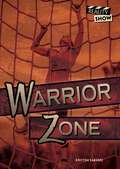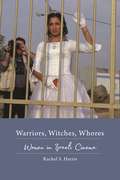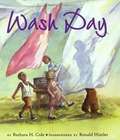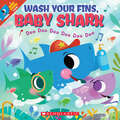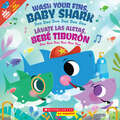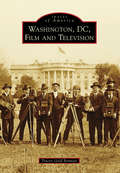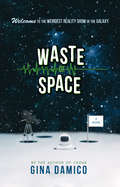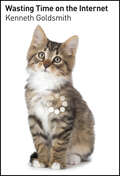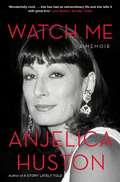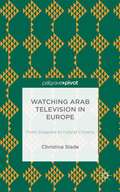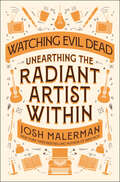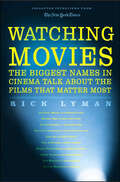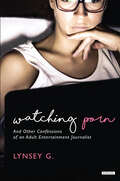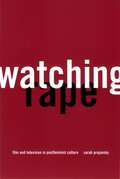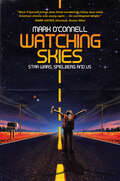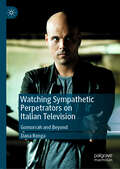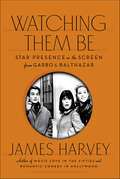- Table View
- List View
Warrior Women: Gender, Race, and the Transnational Chinese Action Star
by Lisa FunnellFinalist for the 2014 ForeWord IndieFab Book of the Year Award in the Women's Studies CategoryBronze Medalist, 2015 Independent Publisher Book Awards in the Women Issues CategoryWinnerof the 2015 Emily Toth Award presented by the Popular Culture Association & American Culture AssociationWarrior Women considers the significance of Chinese female action stars in martial arts films produced across a range of national and transnational contexts. Lisa Funnell examines the impact of the 1997 transfer of Hong Kong from British to Chinese rule on the representation of Chinese identities—Hong Kong Chinese, mainland Chinese, Chinese American, Chinese Canadian—in action films produced domestically in Hong Kong and, increasingly, in cooperation with mainland China and Hollywood. Hong Kong cinema has offered space for the development of transnational Chinese screen identities that challenge the racial stereotypes historically associated with the Asian female body in the West. The ethnic/national differentiation of transnational Chinese female stars—such as Pei Pei Cheng, Charlene Choi, Gong Li, Lucy Liu, Shu Qi, Michelle Yeoh, and Zhang Ziyi—is considered part of the ongoing negotiation of social, cultural, and geopolitical identities in the Chinese-speaking world.
Warrior Zone (Reality Show)
by Kristen SaBerreWhen Fiona enters a physical feats TV competition, she is excited to see how she matches up against other athletes from around the country. She works hard and beats out many of her competitors. But when she reaches the final round, she finds that the show has been rigged all along. The producers take her off-screen to tell her that one of the other contestants has been chosen to win and that she needs to pretend to lose—or she won't win any money. Fiona must choose between competing fairly or playing by the producers' rules.
Warriors, Witches, Whores: Women in Israeli Cinema
by Rachel S. HarrisWarriors, Witches, Whores: Women in Israeli Cinema is a feminist study of Israel’s film industry and the changes that have occurred since the 1990s. Working in feminist film theory, the book adopts a cultural studies approach, considering the creation of a female-centered and thematically feminist film culture in light of structural and ideological shifts in Israeli society. Author Rachel S. Harris situates these changes in dialogue with the cinematic history that preceded them and the ongoing social inequalities that perpetuate women’s marginalization within Israeli society. While no one can deny Israel’s Western women’s advancements, feminist filmmakers frequently turn to Israel’s less impressive underbelly as sources for their inspiration. Their films have focused on sexism, the negative impact of militarism on women’s experience, rape culture, prostitution, and sexual abuse. These films also tend to include subjects from society’s geographical periphery and social margins, such as female foreign workers, women, and refugees. Warriors, Witches, Whoresis divided into three major sections and each considers a different form of feminist engagement. The first part explores films that situate women in traditionally male spheres of militarism, considering the impact of interjecting women within hegemonic spaces or reconceptualizing them in feminist ways. The second part recovers the narratives of women’s experience that were previously marginalized or silenced, thereby creating a distinct female space that offers new kinds of storytelling and cinematic aesthetics that reflect feminist expressions of identity. The third part offers examples of feminist activism that reach beyond the boundaries of the film to comment on social issues, particularly those which affect women. This section demonstrates how feminists use film (and work within the film industry) in order to women’s position in society. While there are thematic overlaps between the chapters, each section marks structural differences in the modes of feminist response. Warriors, Witches, Whores considers the ways social and political power have impacted the representation of women and looks to how feminist filmmakers have fought against these inequities behind the camera, in the stories they tell, and in the ways women are depicted on screen. Students and scholars of film, gender, or cultural studies will appreciate this approachable monograph.
Was It Yesterday?: Nostalgia in Contemporary Film and Television (SUNY series, Horizons of Cinema)
by Matthew LeggattBringing together prominent transatlantic film and media scholars, Was It Yesterday? explores the impact of nostalgia in twenty-first century American film and television. Cultural nostalgia, in both real and imagined forms, is dominant today, but what does the concentration on bringing back the past mean for an understanding of our cultural moment, and what are the consequences for viewers? This book questions the nature of this nostalgic phenomenon, the politics associated with it, and the significance of the different periods, in addition to offering counterarguments that see nostalgia as prevalent throughout film and television history. Considering such films and television shows as La La Land, Westworld, Stranger Things, and American Hustle, the contributors demonstrate how audiences have spent more time over the last decade living in various pasts.
Was Michael Jackson Framed?
by Mary A. FischerThis is it! The original GQ story that became an international sensation by exploring, for the first time in the media, the other side-the defense side-- of the 1993 Michael Jackson scandal. Today, it remains a sought-after story by the superstar's fans around the world.Until now, the original, unedited version of the GQ article has not been available. Now, two years after Michael Jackson's death, in the midst of a resurgence of his music and popularity, the official GQ story is being released, with a new cover and foreword written by the author, award-winning journalist Mary A. Fischer.As the media rushed to judgment about the '93 allegations-that Jackson had molested a 13-year-old boy-no one bothered to look in depth at Jackson's adult accusers. GQ senior writer Mary A. Fischer, known for investigating controversial, under-reported stories, took on the assignment.She spent months delving into the backgrounds of Evan Chandler and his attorney Barry K. Rothman, Jackson's main accusers. What emerged from Fischer's examination, based on court documents, business records and scores of interviews, some with confidential sources who would only meet in out of the way places, was a persuasive argument that Jackson molested no one and that he himself may have been the victim of a well-conceived plan to extract money from him.More than that, it was a classic story of greed, ambition, misconceptions on the part of police and prosecutors, a lazy and sensation-seeking media and the use of a powerful, hypnotic drug.Today, it remains an important, relevant story about how a case was simply invented. And now, for the first time in over a decade, it is available to Michael Jackson fans everywhere.
Wash Day
by Barbara H. ColeEvery wash day Miss Ett does the laundry while Grandpa keeps the children entertained by telling stories about his army days. As he plays his trumpet, they march around in time and sing along to the music. Set during the Great Depression, Wash Day tells the tale of Grandpa passing on his trumpet and his love of music to the next generation. Wash Day is a touching story about the way love and friendship can overcome the barriers of age and race to bring joy and strength to everyone.
Wash Your Fins, Baby Shark (Baby Shark)
by John John BajetSing and dance along with Baby Shark, in this catchy tune all about hand washing!Sing, dance, and read along to this brand-new song as Baby Shark and the whole shark family washes their fins! A fun tool for kids and caregivers alike, this story will have little ones singing along to the important steps of hand-washing, from squirting soap, lathering up, and drying off. Hand-washing will fly by as you sing along at home or at school, and this catchy tune is sure to help little ones remember the hand-washing steps and make sure they're washing for the right amount of time. Featuring a step-by-step guide for little hands and cleanliness tips from Baby Shark, this fun story has eye-popping illustrations and a tune you won't be able to stop singing. A must-have for every home!
Wash Your Fins, Baby Shark / Lávate las aletas, Bebé Tiburón (Baby Shark)
by John John BajetSing and dance along with Baby Shark, in this catchy tune all about hand washing!¡Canta, baila y lee con esta canción nuevecita mientras Bebé Tiburón y toda su familia se lavan las aletas! Esta historia es una divertida herramienta tanto para los niños como para los cuidadores, y hará que los pequeños canten mientras se lavan las manos, desde que se enjabonan hasta que se secan. El tiempo pasará volando mientras cantan, en casa o en la escuela, y esta melodía pegadiza hará a los pequeños recordar los pasos para lavarse las manos y garantizará que le dediquen a esto el tiempo correcto. Esta historia presenta una guía paso a paso con consejos de Bebé Tiburón para tener limpias las pequeñas manos, con ilustraciones llamativas y una melodía que no podrán parar de cantar. ¡Algo imprescindible para todos los hogares!Sing, dance, and read along to this brand-new song as Baby Shark and the whole shark family washes their fins! A fun tool for kids and caregivers alike, this story will have little ones singing along to the important steps of hand-washing, from squirting soap, lathering up, and drying off. Hand-washing will fly by as you sing along at home or at school, and this catchy tune is sure to help little ones remember the hand-washing steps and make sure they're washing for the right amount of time. Featuring a step-by-step guide for little hands and cleanliness tips from Baby Shark, this fun story has eye-popping illustrations and a tune you won't be able to stop signing. A must-have for every home!
Washington, D.C., Film and Television
by Tracey Gold BennettFor generations, movies and television have been sources of entertainment that have shaped the country's consciousness. Washington, DC, Film and Television chronicles popular and obscure films and television programs that feature Washington, DC. Sharing the sites, neighborhoods, institutions, and monuments that filmmakers used as their settings, this exciting title takes readers behind the scenes of classic movies, including Mr. Smith Goes to Washington, Houseboat, and The Exorcist. Familiar television programs that transmitted local news and information are featured alongside photographs of some of Hollywood's greatest stars. With the nation's capital as a backdrop, the landscape, architecture, and history of Washington have always and will continue to make it an aesthetically exciting and authentic locale for the many story lines of Hollywood.
Waste of Space
by Gina Damico<p>Cram ten hormonal teens into a spaceship and blast off: that’s the premise for the ill-conceived reality show Waste of Space. The kids who are cast know everything about drama—and nothing about the fact that the production is fake. Hidden in a desert warehouse, their spaceship replica is equipped with state-of-the-art special effects dreamed up by the scientists partnering with the shady cable network airing the show. <p>And it’s a hit! Millions of viewers are transfixed. But then, suddenly, all communication is severed. Trapped and paranoid, the kids must figure out what to do when this reality show loses its grip on reality.
Wasting Time on the Internet
by Kenneth GoldsmithUsing clear, readable prose, conceptual artist and poet Kenneth Goldsmith’s manifesto shows how our time on the internet is not really wasted but is quite productive and creative as he puts the experience in its proper theoretical and philosophical context.Kenneth Goldsmith wants you to rethink the internet. Many people feel guilty after spending hours watching cat videos or clicking link after link after link. But Goldsmith sees that “wasted” time differently. Unlike old media, the internet demands active engagement—and it’s actually making us more social, more creative, even more productive.When Goldsmith, a renowned conceptual artist and poet, introduced a class at the University of Pennsylvania called “Wasting Time on the Internet”, he nearly broke the internet. The New Yorker, the Atlantic, the Washington Post, Slate, Vice, Time, CNN, the Telegraph, and many more, ran articles expressing their shock, dismay, and, ultimately, their curiosity. Goldsmith’s ideas struck a nerve, because they are brilliantly subversive—and endlessly shareable.In Wasting Time on the Internet, Goldsmith expands upon his provocative insights, contending that our digital lives are remaking human experience. When we’re “wasting time,” we’re actually creating a culture of collaboration. We’re reading and writing more—and quite differently. And we’re turning concepts of authority and authenticity upside-down. The internet puts us in a state between deep focus and subconscious flow, a state that Goldsmith argues is ideal for creativity. Where that creativity takes us will be one of the stories of the twenty-first century.Wide-ranging, counterintuitive, engrossing, unpredictable—like the internet itself—Wasting Time on the Internet is the manifesto you didn’t know you needed.
Watch Me
by Anjelica HustonPicking up where A Story Lately Told leaves off, when Anjelica Huston is 22 years old, Watch Me chronicles her glamorous and eventful Hollywood years. She tells the story of falling in love with Jack Nicholson and her adventurous, turbulent, high-profile, spirited 17-year relationship with him and his intoxicating circle of friends. She writes about learning the art and craft of acting, about her Academy Award-winning portrayal of Maerose Prizzi in Prizzi's Honour, about her collaborations with many of the greatest directors in Hollywood, including Woody Allen, Wes Anderson, Richard Condon, Bob Rafelson, Francis Ford Coppola and Stephen Frears. She writes movingly and beautifully about the death of her father, the legendary director John Huston and her marriage to sculptor Robert Graham.
Watching Anime, Reading Manga
by Fred Patten Carl MacekAnime's influence can be found in every corner of American media, from film and television to games and graphic arts. And Fred Patten is largely responsible. He was reading manga and watching anime before most of the current generation of fans was born. In fact, it was his active participation in fan clubs and his prolific magazine writing that helped create a market and build American anime fandom into the vibrant community it is today. Watching Anime, Reading Manga gathers together a quarter-century of Patten's lucid observations on the business of anime, fandom, artists, Japanese society and the most influential titles. Illustrated with original fanzine covers and archival photos. Foreword by Carl Macek (Robotech). Fred Patten lives in Los Angeles."Watching Anime, Reading Manga is a worthwhile addition to your library; it makes good bathroom browsing, cover-to-cover reading, and a worthwhile reference for writing or researching anime and manga, not to mention a window into the history of fandom in the United States." -- SF Site
Watching Arabic Television in Europe: From Diaspora to Hybrid Citizens
by Christina SladeWhat are Arabic Europeans watching on television and how does it affect their identities as Europeans? New evidence from seven capitals shows that, far from being isolated in ethnic media ghettoes, they are critical news consumers in Arabic and European languages and engaged citizens.
Watching Evil Dead: Unearthing the Radiant Artist Within
by Josh MalermanFrom the bestselling author of Bird Box and Incidents Around the House, an impassioned book about a night that changed the author&’s life and put into perspective the writing life—and how you too can be inspired to face the fears that might hold you back from doing your best work&“A fun, modern take on Stephen King&’s On Writing . . . Malerman&’s trustworthy insights and experiences will no doubt offer its readers who are struggling creatively a healthy dose of inspiration.&”—Booklist, starred reviewOne night, bestselling author Josh Malerman—then just an aspiring writer—watched Sam Raimi&’s Evil Dead with his fiancée and two friends. It was a gathering that could&’ve gone unnoticed, another date night with a movie, but for Malerman, it became a landmark. It changed the course of his life, and it will inspire you to reflect on your own journey and to discover existing triumphs that are within you already.Describing the course of the night, Malerman reflects on his life, from his career as a musician to his stack of rough drafts, written prior to ever being published—and on how meeting the love of his life, a fellow creative, opened him to new experiences and new ways of viewing the world they now quest through together.Malerman deploys his own story to help readers not only write their unwritten stories but celebrate their uncelebrated victories: to find their voice, their vision, and their joie de vivre. By simply describing an uncommon and uncanny night, he guides aspiring writers beyond the blank page to the immortal life of the writer.
Watching Jim Crow: The Struggles Over Mississippi TV, 1955-1969
by Steven D. ClassenIn the early 1960s, whenever the Today Show discussed integration, wlbt-tv, the nbc affiliate in Jackson, Mississippi, cut away to local news after announcing that the Today Show content was "network news . . . represent[ing] the views of the northern press. " This was only one part of a larger effort by wlbt and other local stations to keep African Americans and integrationists off Jackson's television screens. Watching Jim Crow presents the vivid story of the successful struggles of African Americans to achieve representation in the tv programming of Jackson, a city many considered one of the strongest bastions of Jim Crow segregation. Steven D. Classen provides a detailed social history of media activism and communications policy during the civil rights era. He focuses on the years between 1955--when Medgar Evers and the naacp began urging the two local stations, wlbt and wjtv, to stop censoring African Americans and discussions of integration--and 1969, when the U. S. Court of Appeals issued a landmark decision denying wlbt renewal of its operating license. During the 1990s, Classen conducted extensive interviews with more than two dozen African Americans living in Jackson, several of whom, decades earlier, had fought to integrate television programming. He draws on these interviews not only to illuminate their perceptions--of the civil rights movement, what they accomplished, and the present as compared with the past--but also to reveal the inadequate representation of their viewpoints in the legal proceedings surrounding wlbt's licensing. The story told in Watching Jim Crow has significant implications today, not least because the Telecommunications Act of 1996 effectively undid many of the hard-won reforms achieved by activists--including those whose stories Classen relates here.
Watching Movies: The Biggest Names in Cinema Talk about the Films that Matter Most
by Rick LymanAn inside look at how some of the biggest names in the film industry view their craftIn this unique collection, New York Times film critic Rick Lyman sits down with notable directors, actors, screenwriters, cinematographers, and other film industry professionals to watch and discuss a movie that each person considers seminal or influential on his or her career. Steven Soderbergh on how All the President's Men influenced Erin Brockovich* Quentin Tarantino on The Golden Stallion* Ang Lee on Love Eternal* Denzel Washington on Ordinary People* Ron Howard on The Graduateand many moreEach interviewee's character is revealed in the resulting essays, which deepen our appreciation of landmark films, and give us extraordinary insight into the process of filmmaking.Lyman enhances every essay with a brief biography, career history, and complete filmography of each of the subjects, which puts them in a historical and creative context. Drawn from the enormously popular series in The New York Times, Watching Movies will fascinate film students and curious moviegoers alike.
Watching Porn: And Other Confessions of an Adult Entertainment Journalist
by Lynsey G“Lynsey G. is an intrepid explorer, boldly going where few reporters have gone with such a critical eye: deep inside the real world of commercial sex.” —Tina Horn, host of the Why Are People Into That?! podcast Lynsey G. never imagined that she would ever work in porn, but at twenty-four years old, with a degree in English literature and an empty bank account, she found herself reviewing the film East Coast ASSault for an adult magazine in New York City. One interview later and it was official: she was a porn journalist. The job was supposed to be temporary—just a paycheck until she could spark her legitimate writing career—but she loved it and spent nearly a decade describing the nuances of money shots and the effectiveness of sex toys. As both a porn consumer and a porn critic, she was not quite an insider, not quite an outsider, but came to know the industry intimately.She found it so fascinating that she co-founded WHACK! Magazine. Finally, she had a platform to voice her thoughts and observations of the adult film world, as well as educate the rest of us about what really goes on behind the scenes. Eventually, Lynsey was thrust back into the “real” world, but not before realizing that one of the most diverse and nebulous—and profitable—industries on the planet isn’t so quite as different from the rest of the world as she thought. Tantalizing, eye-opening, and witty, Watching Porn is a provocative book about an average girl’s foray into the porn industry and the people who make it what it is, both in front of and behind the camera.“Marvelous.” —The New York Times Book Review
Watching Rape: Film and Television in Postfeminist Culture
by Sarah ProjanskyLooking at popular culture from 1980 to the present, feminism appears to be "over": that is, according to popular critics we are in an era of "postfeminism" in which feminism has supposedly already achieved equality for women. Not so, says Sarah Projansky. In Watching Rape, Projansky undermines this complacent view in her fascinating and thorough analysis of depictions of rape in U.S. film, television, and independent video. Through a cultural studies analysis of such films as Thelma and Louise, Daughters of the Dust, and She's Gotta Have It, and television shows like ER, Ally McBeal, Beverly Hills 90210, and various made-for-tv movies, Projansky challenges us to see popular culture as a part of our everyday lives and practices, and to view that culture critically. How have media defined rape and feminism differently over time? How do popular narratives about rape also communicate ideas about gender, race, class, nationality, and sexuality? And, what is the future of feminist politics, theory, and criticism with regard to issues of sexual violence, postfeminism, and popular media? The first study to address the relationship between rape and postfeminism, and one of the most detailed and thorough analyses of rape in 25 years, Watching Rape is a crucial contribution to contemporary feminism.
Watching Skies: Star Wars, Spielberg and Us
by Mark O'ConnellMark O'Connell didn't want to be Luke Skywalker, He wanted to be one of the mop-haired kids on the Star Wars toy commercials. And he would have done it had his parents had better pine furniture and a condo in California. Star Wars, Jaws, Close Encounters of the Third Kind, E.T. The Extra Terrestrial, Raiders of the Lost Ark and Superman didn't just change cinema – they made lasting highways into our childhoods, toy boxes and video stores like never before. In Watching Skies, O'Connell pilots a gilded X-Wing flight through that shared universe of bedroom remakes of Return of the Jedi, close encounters with Christopher Reeve, sticker album swaps, the trauma of losing an entire Stars Wars figure collection and honeymooning on Amity Island. From the author of Catching Bullets – Memoirs of a Bond Fan, Watching Skies is a timely hologram from all our memory systems. It is about how George Lucas, Steven Spielberg, a shark, two motherships, some gremlins, ghostbusters and a man of steel jumper a whole generation to hyperspace.* *action figures sold separately.
Watching Sympathetic Perpetrators on Italian Television: Gomorrah and Beyond
by Dana RengaThis book offers the first comprehensive study of recent, popular Italian television. Building on work in American television studies, audience and reception theory, and masculinity studies, Sympathetic Perpetrators and their Audiences on Italian Television examines how and why viewers are positioned to engage emotionally with—and root for—Italian television antiheroes. Italy’s most popular exported series feature alluring and attractive criminal antiheroes, offer fictionalized accounts of historical events or figures, and highlight the routine violence of daily life in the mafia, the police force, and the political sphere. Renga argues that Italian broadcasters have made an international name for themselves by presenting dark and violent subjects in formats that are visually pleasurable and, for many across the globe, highly addictive. Taken as a whole, this book investigates what recent Italian perpetrator television can teach us about television audiences, and our viewing habits and preferences.
Watching TV: Six Decades of American Television (Expanded Second Edition)
by Harry Castleman Walter J. PodrazikWatching TV provides a fascinating history of how the personalities, popular shows, and coverage of key events have evolved during the past six decades. Watching TV is the standard history of American television, now updated to include the most recent programming and industry developments.
Watching Them Be: Star Presence on the Screen from Garbo to Balthazar
by James HarveyAn intimate, thought-provoking exploration of the mysteries of "star presence" in cinema"One does not go to see them act," James Baldwin wrote about the great iconic movie stars, "one goes to watch them be." It seems obvious . . . Where else besides the movies do you get to see other persons so intimately, so pressingly, so largely? Where else are you allowed such sustained and searching looks as you give to these strangers on the screen, whoever they really are? In life you try not to stare; but at the movies that's exactly what you get to do, two hours or more—safely, raptly, even blissfully.It's this sort of amplified, heightened, sometimes transcendent "seeing" that James Harvey explores in Watching Them Be. Marvelously vivid and perceptive, and impressively erudite, this is his take on how aura is communicated in movies. Beginning where Roland Barthes left off with the face of Greta Garbo and ending with Robert Bresson's Au hasard Balthazar (and its inscrutable nonhuman star), Harvey moves nimbly and expertly through film history, celebrating actors and directors who have particularly conveyed a feeling of transcendence. From Marlene Dietrich to John Wayne to Robert De Niro, from Nashville to Jackie Brown to Masculine/Feminine and the implicitly or explicitly religious films of Roberto Rossellini and Carl Theodor Dreyer, this is one man's personal, deeply felt account of the films that have changed his life. They will also, Harvey suggests, change yours.
Watching While Black Rebooted!: The Television and Digitality of Black Audiences
by Jacqueline Johnson Michael Boyce Gillespie Shelleen Greene Brandy Monk-Payton Eric Pierson Christine Acham Felicia D Henderson TreaAndrea M. Russworm Nghana Lewis Adrien Sebro Alfred L Martin Briana Barner Beretta E. Smith-ShomadeWatching While Black Rebooted: The Television and Digitality of Black Audiences examines what watching while Black means in an expanded U.S. televisual landscape. In this updated edition, media scholars return to television and digital spaces to think anew about what engages and captures Black audiences and users and why it matters. Contributors traverse programs and platforms to wrestle with a changing television industry that has exploded and included Black audiences as a new and central target of its visioning. The book illuminates history, care, monetization, and affect. Within these frames, the chapters run the gamut from transmediation, regional relevance, and superhuman visioning to historical traumas and progress, queer possibilities, and how televisual programming can make viewers feel Black. Mostly, the work tackles what the future looks like now for a changing televisual industry, Black media makers, and Black audiences. Chapters rethink such historically significant programs as Roots and Underground, such seemingly innocuous programs as Soul Food, and such contemporary and culturally complicated programs as Being Mary Jane and Atlanta. The book makes a case for the centrality of these programs while always recognizing the racial dynamics that continue to shape Black representation on the small screen. Painting a decidedly introspective portrait across forty years of Black television, Watching While Black Rebooted sheds much-needed light on under examined demographics, broadens common audience considerations, and gives deference to the preferences of audiences and producers of Black-targeted programming.
Watching with The Simpsons: Television, Parody, and Intertextuality (Comedia)
by Jonathan GrayUsing our favourite Springfield family as a case study, Watching with The Simpsons examines the textual and social role of parody in offering critical commentary on other television programs and genres. Jonathan Gray brings together textual theory, discussions of television and the public sphere, and ideas of parody and comedy. Including primary audience research, it focuses on how The Simpsons has been able to talk back to three of television’s key genres - the sitcom, adverts and the news - and on how it holds the potential to short-circuit these genre’s meanings, power, and effects by provoking reinterpretations and offering more media literate recontextualizations. Examining television and media studies theory, the text of The Simpsons, and the show’s audience, Gray attempts to fully situate the show’s parody and humour within the lived realities of its audiences. In doing so, he further explores the possibilities for popular entertainment television to discuss issues of political and social importance. A must read for any student of media studies.

